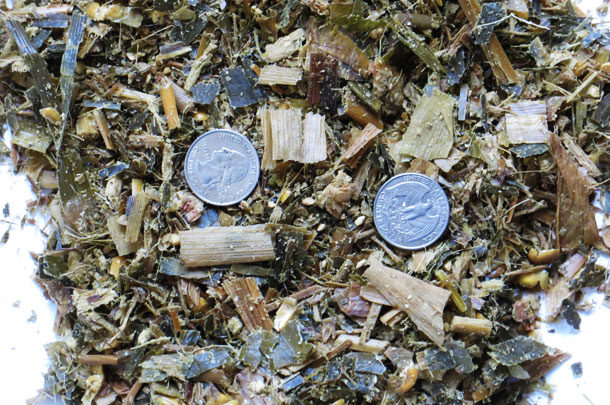1. Have your storage facility ready
Make any repairs necessary to the surfaces of your storage structure. If using bunkers, consider wrapping the walls with plastic to reduce shoulder spoilage and to aid in cold weather removal. To do this you will need to:
- Cover or smooth edges on top of walls that may tear the plastic.
- Lay 4- to 6-inch drain tile along the bottom edge of the wall to direct water out of the bunker, and drape plastic over the wall, securing with some feed along the bottom edge, leaving enough for about 6 inches of overlap on top of the forage.
- If using an oxygen barrier, place it over the top of the chopped corn prior to pulling the side plastic.
- Cover with plastic so that water will travel down the sidewalls to the drain tile and exit the bunker.
2. Evaluate your risk
Consider taking the time to identify high-risk fields that may be wet or dry, immature or mature, damaged or subject to high levels of undesirable organisms. Each growing season brings different challenges for ensiling quality corn silage, namely inconsistencies.
Epiphytic yeast and mold counts going into bunkers and piles can range from 100,000 to over 1,000,000 cfu/g. At the very least, this knowledge can be used as a basis for more frequent testing and analysis to determine if these higher risk forages are being managed appropriately through storage and at feed out.
3. Density
In producer meetings, we repeatedly discuss the importance of corn silage density and porosity. The old target for dry-matter (DM) density of 14 to 15 pounds is insufficient for ideal fermentation and aerobic stability, so we recommend a target of 19 pounds with an absolute minimum of 17 pounds DM per cubic foot. In order to achieve this goal, we must have accurate knowledge of the tons being delivered to the bunker, as well as the amount of weight we have available for packing.
A review of “the rule of 800” shows us that when we multiply the tons delivered per hour by 800, we achieve the minimum desired packing weight (i.e., 200 tons per hour requires 160,000 pounds of packing weight). Each additional pound of DM density results in an approximately 10 percent increase in DM recovery (less DM loss). Unfortunately, we often see instances where the benefits of rapid harvest have been diminished by the lack of proper packing.
4. Chop length and kernel processing score
Do not rely on the chopper settings! Be prepared to measure chop length and kernel processing score (KPS) coming out of the chopper. Carry some coin change to the chopper, as a penny is 0.75 inch (19 mm) and a quarter is 0.955 inch (24 mm) and can be used to quickly evaluate chop length.
KPS can be checked in the field, but not as accurately as by laboratory analysis. Any whole or half kernels indicate the processing roll gap may need to be narrowed. Although KPS improves with storage and de-facing, our minimum threshold for KPS going into storage is still 70.
Just last year, a new chopper of a different brand was purchased mid-season. Although tolerances were set to attain the goals of the farm, no one checked the chop length and KPS, resulting in more than 50 percent of the pile of silage being too coarse with a poor KPS. As a result, the farm has struggled to maintain their typical milk production.
5. Calibration of the inoculant applicator
Now that you have selected the right inoculant for corn silage, it is time to be sure you are applying it at the recommended rate. Check the applicator to ensure it is calibrated correctly, or ask your custom harvester to do the same. In order to calibrate correctly, you will need to know at least two things:
- Reasonably accurate estimate of the tons per unit of time being harvested and the dry matter (or moisture) of the crop.
- The concentration and amount of solution (or grams of dry product) being applied per unit of time. Typical low volume application is 1.28 ounces per ton of fresh forage.
Don’t let another year go by saying, “Next year we are going to (fill in the blank); we just didn’t have time this year.” Make the time to be truly ready to make corn silage this year! FG

-
Tim Patchin
- Regional Account Manager
- Chr. Hansen Animal Health & Nutrition

-
Keith A. Bryan
- Americas Technical Services Manager
- Chr. Hansen Animal Health & Nutrition
PHOTO: Carry some coin change to the chopper; a quarter is 0.955 inch (24 mm) and can be used to quickly evaluate chop length. Photo provided by Cindy Bryan.












